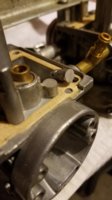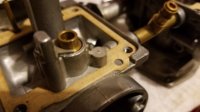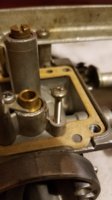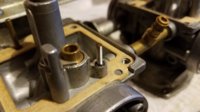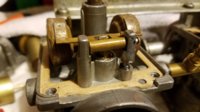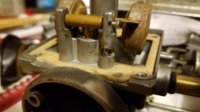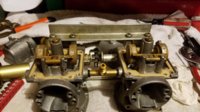So would it be safe to say that I could buy some sort of aluminum brazing rod, a propane torch, and then solder this thing back together after cleaning the two surfaces?
Hi Jax,
unless you are a qualified welder with lots of experience working with Zinc-based alloys the 4th or 5th carb body you try to braze won't just melt into a blob and the 10th might even be a successful repair.
Try a mechanical fix. File the post stub-end flat and drill and tap it M4. Take a length of M4 threaded rod, pound the end flat and drill it through to fit the float pivot pin. Screw the new post end into the hole.

